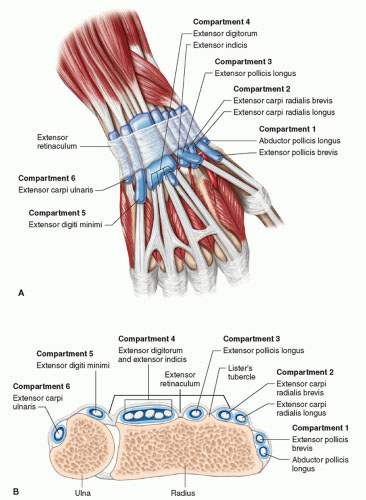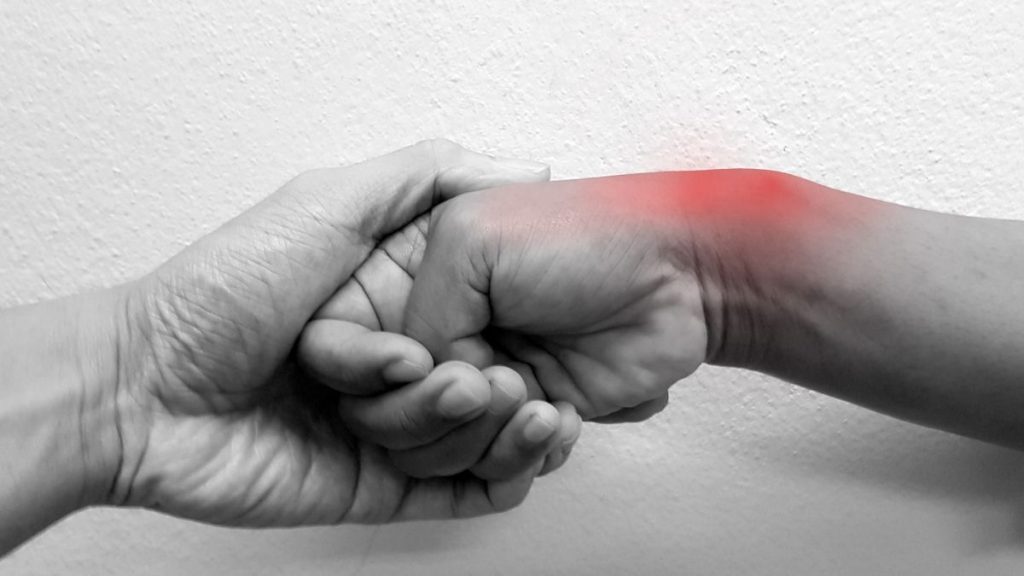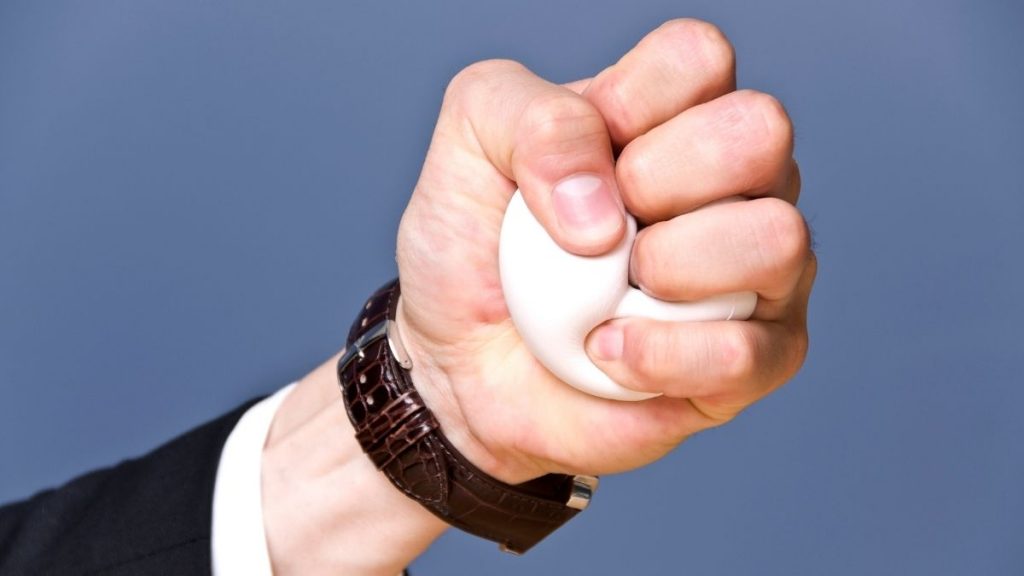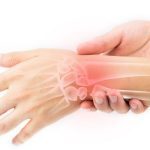De Quervain’s tenosynovitis is a common cause of wrist pain in adults, typically presenting as thumb sided wrist pain. It is described as inflammation of the tendons within the first extensor compartment of the wrist, resulting in local pain and swelling. Rabin et al (2015) report that 2.1% of the general population develop De Quervain’s tenosynovitis, affecting particularly those who perform repetitive tasks involving hand twisting or bending.
Anatomy
The wrist is a complex structure due to the exceptional fine motor skills performed by the wrist, thumb and fingers. Enabling this complexity are the extensor tendon compartments of the wrist, which are six tunnels that transmit the long extensor tendons from their muscle belly in the forearm into the hand. They are located on the top of the wrist. Each tunnel is lined internally by a synovial sheath or covering and separated from one another by fibrous septa. De Quervain’s tensosynovitis is a condition that affects the tendons of abductor pollicis longus and extensor pollicis brevis as they cross over the wrist and into the thumb. They form the lateral border of what we call the “Anatomical snuffbox”.

What is the cause?
De Quervains is commonly seen in people whose occupation, past time or sport requires repetitive actions of the wrist or thumb – such as typing, texting, gardening or those who participate in racquet sports (Katana et al, 2012). In addition, the prevalence is significantly higher in females (Adachi et al, 2011) with young mums often at risk of this condition due to repetitive picking up and holding of newborns or toddlers. The condition is related to a rapid change in workload of the muscles, where the muscles of the wrist and thumb are unable to cope with these increased demands i.e. they get fatigued. Other causes of this injury can be a direct trauma to these tendons, or inflammatory conditions such as rheumatoid arthritis.
How are symptoms described?
This can be a very painful and disabling condition, and when irritated is often described as a constant ache combined with a sharp pain when moving the wrist in a way that causes a stretch of these tendons. Pain is experienced over the base of the thumb, and symptoms worsen by certain movements, such as ulnar deviation of the wrist (the wrist laterally flexing towards the ulnar), thumb extension or adduction, and when doing gripping or pinching activities. In some instances, there may be swelling at the base of the thumb and there may be a clunking sensation when moving the wrist. Tenderness is typically palpated over the anatomical snuffbox.
Diagnosis and Examination
De Quervain’s can be diagnosed quite simply via a physiotherapy assessment. We will ask questions to investigate the location of pain, the patterns of symptoms experienced (aggravating and easing factors and onset of pain throughout the day), and work/training/lifestyle history that may affect or have caused the symptoms to arise. During the physical examination we will assess wrist and thumb range of motion, muscle strength and endurance testing, grip strength, and we will palpate tenderness, which as mentioned earlier will typically be over the anatomical snuffbox and base of the thumb. A special test known as “The Finkelstein test” is one of the best ways to diagnose this condition (Wu et al, 2018). The patient actively flexes the thumb and grasps it making a fist, before going into ulnar deviation, stretching the muscles of the first extensor compartment. A positive test will elicit pain.
Further, as the initial assessment is very holistic, we will assess for shoulder, elbow or arm movement restrictions or weakness, and shoulder blade dysfunction, all which may be precursors to this condition.

Treatment and Rehabilitation
The focus of physiotherapy is to reduce or eliminate the cause of the irritation of the thumb tendons, but also to settle down initial symptoms. The nature of developing De Quervain’s tenosynovitis – reduced tendon load capacity – indicates the importance of rehabilitation of this condition. Initial de-loading of the tendon is important to settle thumb and wrist symptoms. This can be done by rest from aggravating activities, however given the nature of using our hands this often proves difficult, so a special thumb immobiliser splint is often used so you do not keep irritating your thumb. It is important to note that rest/immobilisation is only short-term management and does not address the overall weakness of the tendon itself.
Physiotherapy for De Quervain’s Tenosynovitis involves exercises to help strengthen and stabilise the muscles, joints and tendons in the hand and thumb. Gradual loading of these muscles around the wrist and thumb is important to improve the tendons load capacity. Early on in rehab, this can be done by performing isometric exercises which can have an analgesic effect, however, must progress into isotonic exercises – meaning strengthening exercises through movement. Isotonic exercises are more functional, meaning they will have a greater translation into everyday life. In addition, grip strengthening exercises prove very beneficial. Some of the exercises prescribed aim to get the patient’s hand working in ways that are similar to their work tasks, ADL’s and sports activities so they can reach their goals.
Along with the wrist specifically, it is important to address any additional factors that may predispose people to this condition. We assess posture, lifting technique, shoulder/arm mechanics, and sporting technique to identify these factors. Correcting altered movement and muscle activation and strength further up the kinetic chain can enhance efficiency of movement at the wrist and therefore contribute to a reduction in symptoms of the thumb/wrist complex and help prevent a recurrence of injury.

Alternate treatment options
Other treatment options which may be an adjunct to physiotherapy include cortisone injections and NSAIDs. If conservative management fails, surgery is considered.
Get a Great Result
Overall, De Quervains tenosynovitis is a condition that can typically be managed easily with physiotherapy when identified and diagnosed early. Compliance with the prescribed home exercise program, avoiding/modifying aggravating activities and immobilisation if required are all imperative to get a good outcome.
Are you experiencing thumb or wrist pain?
GET AN ASSESSMENT & TREATMENT WITH OUR AMAZING TEAM OF PHYSIO’S.

- Get crystal clear about what you have done – Get an Accurate Diagnosis!
- Find out the most important steps for you to get pain free and back to life fast!
- Understand how to manage your activities without suffering the consequences of further pain and injury
- Find out the simple yet essential exercises that can give you relief and speed up your recovery
- Leave the session with the confidence of knowing exactly what to do to get symptom free and get back to sport, activity and the things that you love.

